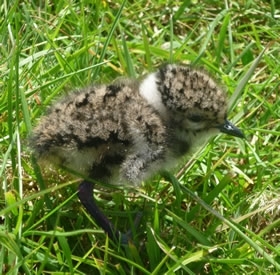 By Dr Andrew Hoodless, Head of Wetland Research
By Dr Andrew Hoodless, Head of Wetland Research
Last month we were pleased to report that 2016 appears to have been a better year for lapwing chicks in the Avon Valley, Hampshire, with a higher than average survival rate. It was encouraging news, as this iconic but rapidly declining farmland bird has seen its numbers drop by more than 50% in the last 25 years, and it is now ‘red-listed’ as a bird of conservation concern.
The GWCT has monitored breeding waders in the Avon Valley for over 20 years, and recording of lapwing breeding success over the last eight years has shown that numbers of chicks fledging are too low to support a stable breeding population.
When it comes to solutions for reversing the decline in farmland bird populations, agri-environment schemes are the main delivery mechanisms.
Within the Countryside Stewardship Scheme (CSS), for lapwing, options such as GS9, GS11 and WN2, the ‘management/creation of wet grassland for breeding waders’ and the ‘creation of scrapes and gutters’, aim to improve wet grassland habitat, and fallow plots comprise an option (AB5) that is designed to provide both nesting and foraging opportunities on arable land.
First introduced in 1993 as the Environmentally Sensitive Areas scheme, before changing to the Higher-Level Scheme (part of Environmental Stewardship) ten years later, the time has come to ask to what extent these schemes offer a solution to the decline of lapwing.
Looking specifically at the Avon Valley in Hampshire, c.70% of the area is in agri-environment scheme agreements adopted by the farmers. Generally, the Scheme has indeed helped with starting to improve the habitat, and many measures, such as ditch and scrape improvement are well-conceived.
For example, the pollarding of willows, a traditional pruning method, has helped to open up the field boundaries and facilitate access for ditch maintenance. Ditches are typical foraging areas where the parent birds will take lapwing chicks.
Last year, a total of 57 nests were found along the Avon Valley, and chicks were hatched from over 50% of these. Unfortunately, chick survival was poor, with pair productivity still below the level required to maintain a stable population, and chick mortality due to predation being one of the main reasons identified locally.
The CSS has introduced a number of new measures as an attempt to manage this issue, one of which is electric fencing to protect ground-nesting birds. This is easier to manage around fallow plots, but the chicks do not necessarily stay within the fencing in their search for food.
On wet grasslands there are practical issues involved with electric fencing, particularly with grass growth from mid-May and where species-rich swards mean that matting to suppress grass or strimming vegetation are not options.
Despite all of these measures and requirements made of farmers and landowners, the crux of the issue is that whilst these schemes create attractive habitat for breeding lapwings, they have not boosted productivity sufficiently at a national scale to halt the decline in lapwing numbers.
Further work is urgently needed to address how options can be most effectively deployed within the landscape and to develop and implement more effective measures for reducing predation.
Please support our wader work in the Avon Valley